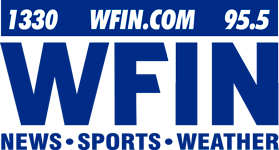MLB to test automated ball-strike challenge system during spring games
3:57 AM UTC
Umpires first began calling both balls and strikes way back in 1864, and baseballers have been arguing about those calls ever since. Strike-zone judgment has been the subject of some untold number of verbal (and, yes, sometimes even physical) tussles. It has led to outbursts, interruptions, ejections.
The greatest managerial meltdown to ever be caught on tape? It was over a ball call, of course.
As technology became increasingly capable of accurately assessing where pitches were placed, people understandably began to pine for MLB to dispense with the “human error” of umpiring and let the “robots” do their thing. But experimentation has revealed that idea to have its own potential problems, and so a compromise has arisen that has been deemed worthy of some Spring Training reps.
Welcome to the ABS challenge system.
During the Grapefruit and Cactus League seasons this spring, the Automated Ball-Strike System (ABS), presented by T-Mobile — as it’s officially called — will be in place for roughly 60% of Spring Training games, as MLB uses the exhibition season to determine whether the system is suitable for the Major League level.
“This is a pretty big decision for the game of baseball,” said MLB executive vice president of baseball operations Morgan Sword, “that we want to get everybody to weigh in on.”
There are 13 Spring Training ballparks, covering 19 home teams with shared facilities, equipped with the technology, so, at one point or another, every team will play games in which they have the opportunity to challenge ball-strike calls that they feel the umpires may have gotten wrong. And though this system will not be in place for the 2025 regular season at the MLB level, successful implementation this spring could get the industry, at large, on board with the idea of bringing it to the big leagues in the not-too-distant future.
So… how does the ABS challenge system work? And why is it preferable to “robot umps”?
Let’s review.
What is the ABS challenge system?
It is a compromise between “full ABS” (i.e. all balls and strikes being called by a computer) and tradition, with a sprinkle of strategy tossed in.
In the ABS challenge system, the human, home-plate umpire calls balls and strikes, per usual. But Hawk-Eye technology is running in the background, monitoring the exact location of the pitch relative to the batter’s strike zone. This allows players to ask for a challenge of a ball or strike call that they feel the umpire got wrong. (Hawk-Eye has provided core data for ball, player, and bat tracking for Statcast since 2019.)
How many challenges does each team receive?
In ABS challenge games played during Spring Training 2025, each team will start the game with two challenges apiece.
Who can issue a challenge?
The batter, the pitcher or the catcher can challenge an umpire’s call. No one else — no, not even the manager — may do so.
Challenges must be made immediately after the umpire’s call, without assistance from the dugout or other players.
How is a challenge issued?
The player taps his cap or helmet to alert the umpire to his desire to challenge the call.
How is the call reviewed?
The Hawk-Eye view is shown to those in attendance via the video board and to home viewers via the broadcast.
How much time does the review add to the game?
In Minor League experimentation, a challenge added 17 seconds of game time, on average.
Are successful challenges retained?
Yes. A team only loses its challenge if the umpire’s call is confirmed.
Because challenges can be lost, it is incumbent upon the player to be judicious about asking for a challenge (i.e., not “wasting” it in a low-leverage spot so that it is available to his team in a high-leverage spot). So in that sense, the ABS challenge system adds strategy to the sport.
Do teams get an extra challenge in extra innings?
No.
How long was this tested in the Minor Leagues?
The full ABS system was first used in the independent Atlantic League in 2019. The challenge system was first used in the Florida State League in 2022. During the 2023 and 2024 Triple-A seasons, both the challenge system and full ABS were tested. By the end of 2024, full ABS had been pushed aside in favor of the challenge system.
Why the challenge system and not full ABS?
Minor League (MiLB) testing revealed a clear preference among fans, players, managers and other personnel for the challenge system. The reason, in so many words, is that fans and baseball people still desire a human element of umpiring that involves feel for the game. In MiLB games featuring full ABS, walks were more prevalent, causing games to drag on (and countering the improvements in pace made by the pitch clock).
Also, the art of pitch framing — a craft catchers have studied and in many cases mastered — would go away with full ABS. This is a change the players generally do not support.
Were full ABS to come to the big leagues, it would be hard to put the toothpaste back into the tube. The challenge system is seen as a way to get more of the most important calls correct without dramatically altering the sport overnight. It is a middle ground between full ABS and tradition.
What is the goal of the Spring Training experiment?
To determine whether ABS, in its current form, is suitable for the Major Leagues and also to identify any potential changes for testing during the MiLB season in 2025.
Will the ABS challenge system be used in the regular season?
Not at the MLB level, no. This is strictly a Spring Training experiment.
How did MLB arrive at allowing two challenges per team?
At the MiLB level, MLB experimented with three challenges per team per game and two challenges per team per game. Three-challenge games had an average of 5.8 challenges per game, while two-challenge games had an average of 3.9 challenges per game.
In surveys of fans at Triple-A games, 71% said the optimal number of total challenges per game is four or fewer. Two-challenge games met this criteria 62% of the time, while three-challenge games met it only 30% of the time.
How often are challenges successful?
We’ll see how it plays out in the Spring Training season, but, in Minor League testing last year, calls challenged by players have been overturned 51% of the time.
“In no strike zone that we’ve tried, in no format that we’ve tried,” said Sword, “has that rate moved much above or below 50%, which is pretty interesting in that these are the subset of pitches that are most ‘controversial’ among players.”
Which Spring Training games will feature the ABS challenge system?
Of the 23 Spring Training ballparks, 13 are equipped with Hawk-Eye technology.
In the Cactus League in Arizona, it is available at Salt River Fields (home of the Diamondbacks and Rockies), Camelback Ranch (Dodgers and White Sox), the Peoria Sports Complex (Mariners and Padres), Surprise Stadium (Rangers and Royals) and Goodyear Ballpark (Guardians and Reds).
In the Grapefruit League in Florida, it is available at TD Ballpark (Blue Jays), BayCare Ballpark (Phillies), George M. Steinbrenner Field (Yankees), Publix Field at Joker Marchant Stadium (Tigers), LECOM Park (Pirates), Hammond Stadium (Twins), Clover Park (Mets) and Roger Dean Chevrolet Stadium (Cardinals and Marlins).
How is the ABS strike zone measured?
Like the plate, it is 17-inches wide. The top end of the zone is at 53.5% of the player’s height, while the bottom is at 27% of the player’s height. The depth of the zone is 8.5 inches from both the front and back of the plate.
How does this compare to the human umpire zone?
The umpire-called zone has generally been more rounded and more lenient to pitchers, with a 55.6% max up top and 24.2% minimum at the bottom.
As an example of the impact this can have on a key call, MLB research found that, in 2-2 counts, the umpire-called zone was 449 square inches, while the ABS zone was 443 square inches.
How does the ABS zone account for different player heights?
By the time the ABS challenge system is in use in a Spring Training game, all position players in camps will have had their heights measured – first by a team of independent strength and conditioning personnel conducting manual measurements, then by representatives from Southwest Research Institute using biomechanical analysis to confirm the manual measurements and safeguard against potential manipulation.
Players are measured standing straight up without cleats.
Couldn’t teams use the broadcasted strike-zone to help them identify pitches to challenge?
That is enough of a concern that MLB is also going to use Spring Training to experiment with different ways of showing (or not showing) the strike zone on broadcasts. These will include showing the box but not the dot depicting the location of the ball, showing the dot depicting the ball but not showing the box, and showing only the corners of the box as opposed to the full box.
As noted when the league experimented with not showing the box at all during the All-Star Futures Game last year, there is also an entertainment incentive to not “give away” whether a pitch was a ball or a strike prior to a challenge, and the broadcast strike zones are inconsistent in their accuracy, anyway.

